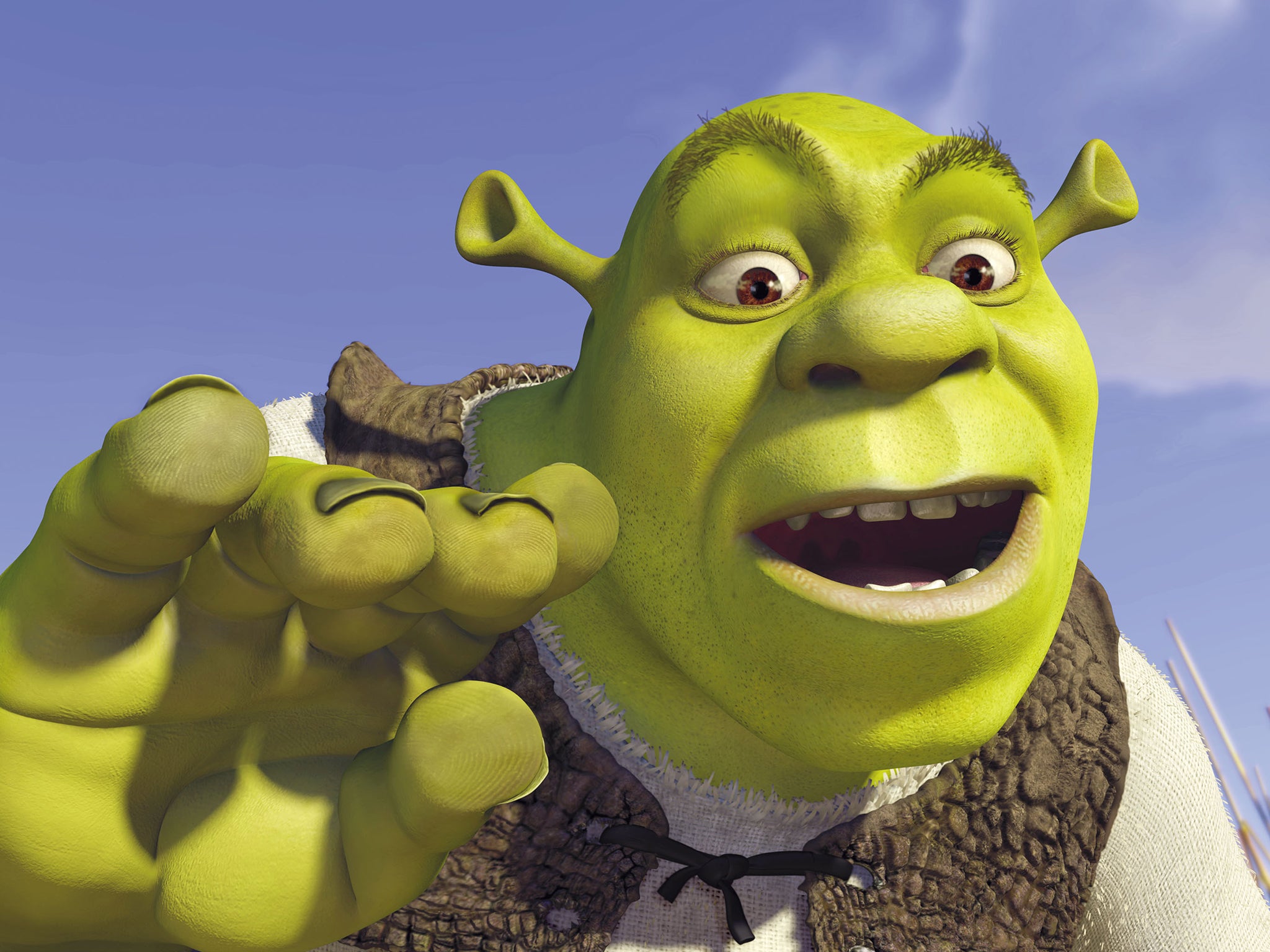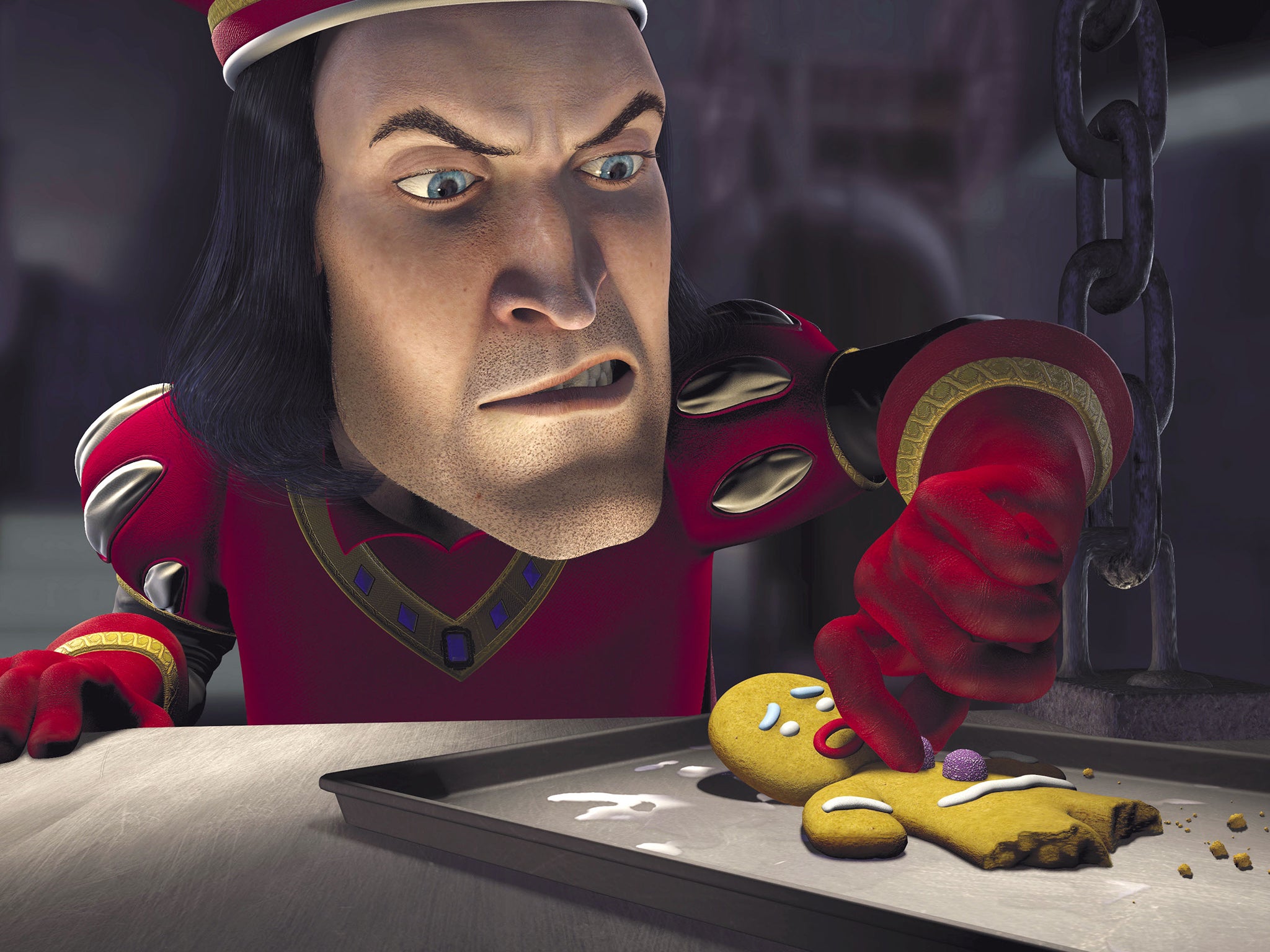Shrek at 20: Haters be damned, this grumpy ogre changed cinema
It turns out that nothing is capable of sparking more heated emotions than a plucky fairytale comedy about a green swamp-dweller and his donkey. As the animated classic turns 20, Shrek expert Sam Summers asks why it doesn’t get the credit it deserves

Your support helps us to tell the story
From reproductive rights to climate change to Big Tech, The Independent is on the ground when the story is developing. Whether it's investigating the financials of Elon Musk's pro-Trump PAC or producing our latest documentary, 'The A Word', which shines a light on the American women fighting for reproductive rights, we know how important it is to parse out the facts from the messaging.
At such a critical moment in US history, we need reporters on the ground. Your donation allows us to keep sending journalists to speak to both sides of the story.
The Independent is trusted by Americans across the entire political spectrum. And unlike many other quality news outlets, we choose not to lock Americans out of our reporting and analysis with paywalls. We believe quality journalism should be available to everyone, paid for by those who can afford it.
Your support makes all the difference.Shrek has always occupied a strange position in the cultural conversation. The groundbreaking animation from upstart studio DreamWorks, which turned 20 this week, certainly has its fans – its ubiquitous place at the heart of online meme-dom is testament to that – but it’s also long had its detractors. To some, the movie was ground zero for an uninspired wave of snarky animated blockbusters , from DreamWorks’ follow-up Shark Tale to Disney’s own Chicken Little and the inescapable Minions franchise. While there’s truth to that claim, Shrek’s significance goes far beyond that.
When it comes to Shrek, I know my onions, so to speak. I’ve written a book about its impact and legacy, given talks on its bold, postmodern storytelling techniques at universities around the country, and I’m organising the first academic conference dedicated to unpacking its many layers.
The film subverts typical fairytale dynamics by following a grumpy but misunderstood ogre (Mike Myers) and his companion Donkey (Eddie Murphy). He journeys to save a beautiful princess (Cameron Diaz) – who isn’t all that she seems herself – and save his beloved swamp from the evil Lord Farquaad (John Lithgow). It’s a simple story, but the way in which it was told managed to shake up the animation industry to the point that I’ve spent a big chunk of my career discussing its history. It was a breakthrough film in a host of ways – it was one of the first to render computer-animated humans who didn’t look creepy as hell, for example – but it’s Shrek’s anarchic take on mega-successful Disney classics that makes it really significant.
Certain critics have argued that this attitude is cynical and destructive, but in reality it was essential to the evolution of Hollywood animation from the repetitive Disney approach that had dominated in one form or another since the 1930s. As an animation buff, I’ve got a huge place in my heart for Disney – almost as much as I did back in 2001, as an eight-year-old Lion King nut about to have my world turned upside down by Shrek itself. But I have never held up those classic fairytale musicals as untouchable sacred texts, ones that need to be locked away like a princess in a tower and protected from satire and parody. In the animation world, Disney is as close to The Man as you can get, and taking them down a peg has been a winning formula ever since the Looney Tunes first tried it in the 1940s.
By the end of the 1990s, Disney was bigger than ever, and their approach to converting classic fairytales into blockbuster musicals had spawned a raft of imitators. It’s no wonder audiences were ready to eat up what Shrek had to offer. But the movie’s approach to sticking it to the Mouse is more sophisticated than the farting ogres and burping princesses highlighted by its critics. Take its villain, Lord Farquaad, his obsession with perfection, and his hatred of the unruly fairytale creatures he struggles to control. His kingdom, Duloc, is a clear nod to Disneyland, from its irritating animatronics and mascots to its pristinely artificial aesthetic.
Compare this to Shrek’s swamp – filthy and grotesque, yes, but also incredibly appealing – and you’ve got a clear critique of Disney’s sanitised, family-friendly versions of such grimy European folk tales. Farquaad represents Disney as a cold adaptation machine, seizing stories from around the world and forcing them into the same “perfect” box. As satire, it might not be radical – especially since Shrek producer Jeffrey Katzenberg was one of the architects of that same approach from his time at Disney. But, coming at the tail end of Disney’s world-conquering Nineties run, it felt necessary.
By 2000, it was clear that the cycle of fairytale musicals that had dominated Hollywood animation for a decade had run its course. Box office takings were dropping as audiences tired of the formula. Films such as Tarzan and Hercules lost money, while other studios diluted the market with also-rans (think 20th Century Fox’s Anastasia). Meanwhile, Toy Story’s cutting-edge computer-animation had made Disney’s hand-drawn aesthetic seem quaint. The industry was floundering trying to find the next big thing. Disney and its competitors moved from musicals to sci-fi actioners like Atlantis: The Lost Empire and Titan AE with mixed results, while early CGI efforts like Dinosaur and Final Fantasy: The Spirits Within got lost in the uncanny valley.

When critics come for Shrek, they tend to take aim less at its merits as a film and more at its legacy, deriding the slew of imitators that followed in its wake. What needs to be acknowledged, though, is how much of a boon this has been for mainstream Hollywood animation. Disney had a complete monopoly over the form for most of the 20th century, and their movies became artistically stagnant as a result. Competition is important, and Shrek provided a roadmap for a wave of competitors to get into the game. With its canny use of hit songs, celeb voiceovers and pop culture gags, it gave these studios a new formula to follow. What made Shrek a hit was seen as easier to duplicate than the magic mix of zany invention and sincerity that fuelled Pixar’s string of successes. It was a lucrative approach that kept these fledgling studios open long enough to make real aesthetic innovations in the field.
Critics would be right to say that the last two decades of Hollywood animation have felt a bit samey. Hand-drawn animation has continued to flourish around the world, with movies like The Tale of the Princess Kaguya from Japan’s Studio Ghibli and Wolfwalkers from Ireland’s Cartoon Saloon proving that there’s still new ground to be broken in that century-old medium. Meanwhile computer animation, especially in the US, seems to centre around the same Pixar-style 3D visuals mixed with Shrek’s pop-infused sensibilities. But while some are keen to lay the blame for that at the feet of DreamWorks and their most celebrated ogre, I’d argue that by breaking the mould of what the animated feature could be – and breaking the industry wide open in the process – Shrek paved the way for future innovations.
Spider-Man: Into the Spider-Verse and the recent The Mitchells vs the Machines have been rightly held up as major leaps in the development of computer-animated film, moving away from traditional 3D designs and embracing the full potential of the technology in wacky and inventive ways. In their postmodern, densely intertextual approach to storytelling and comedy, these films are some of the first to take the baton from Shrek and carry it to the next level. Even more importantly, though, the studio behind them – Sony Pictures Animation – probably wouldn’t exist today if it hadn’t had a decade’s worth of success with Shrek-alikes like Open Season and Hotel Transylvania. More studios makes for more animation and, importantly, more jobs for animators. By galvanising the industry when it needed it the most, Shrek helped change cinema, and its impact on animation remains far broader than its detractors often give it credit for.



Join our commenting forum
Join thought-provoking conversations, follow other Independent readers and see their replies
Comments